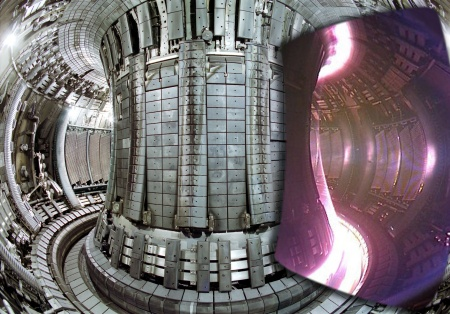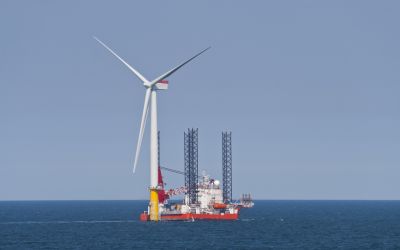Could nuclear fusion keep the lights on?
Research into fusion energy has been taking place for around 60 years. With JET in the UK producing good results, and ITER in France set to be running by 2019, is fusion energy finally within our grasp?

 Sixty years after fusion research began, with around 30 years until DEMO, the first full size power station connected to the national grid looks possible, is fusion energy truly within our grasp?
Sixty years after fusion research began, with around 30 years until DEMO, the first full size power station connected to the national grid looks possible, is fusion energy truly within our grasp?
Those at the Culham Centre for Fusion Energy (CCFE) think it is. Chris Warrick from CCFE says the potential for nuclear fusion - which harnesses the reaction that takes place on the sun - could be huge, but admits its major disadvantage is that the technology still some way off.
“If you had waved a magic wand in an ideal world, it would be ready and coming to market in the next 10 years, because that’s when things are really needed; fusion research is very difficult. However, having another viable alternative in 30 years time, I think, can only be beneficial.”
Fusion nuclear differs from the fission nuclear currently on the grid in the UK, using a different material and different reaction to make energy.
The Culham Centre currently houses MAST, (Mega Amp Spherical Tokamak) the British fusion project, and JET, the Joint European Torus. Both use a doughnut shaped device called a tokamak. This uses an electromagnetic field to contain charged particles in a soup-like plasma that under ideal conditions undergo the nuclear fusion reaction – akin to the kind of energy released by the sun.
The next major step for fusion power is ITER, a joint project between Europe, the U.S, India, China, Japan, South Korea and Russia, for a larger tokamak to be built in Cadarache, France.
Speaking at a Society of Chemical Industry Lecture at University College London (22 February), Warrick said: “Successful demonstration of the materials we need to build a future fusion power station is what we will be testing on ITER. If we can prove that we can build a station that will run economically and safely for thirty years then industry will start to take an interest.”
The UK, along with the other ITER project countries also has national magnetic confinement nuclear fusion projects. Japan’s national fusion programme is now running and in the US research is also underway into laser fusion – a different method, using lasers to cause the same energy releasing reaction.
In the UK, JET, currently the world’s largest tokamak, has gone some way to demonstrate what a fusion power station could do. ITER, however, will go one step further. It will be larger, hopefully meaning the plasma used in the process can keep itself hot; a major step toward large-scale nuclear fusion.
In 1997, JET produced its record of 16 MW of power; ITER is designed to produce 500 MW. A conventional nuclear fission power station currently produces between 1000 and 1600 MW of power. ITER will also be the first opportunity to try out neutron capture methods, an integral part of the energy production process.
This is viewed as a major step towards DEMO, the Demonstration Power Plant, which could begin operation in the 2030s, putting fusion power on the grid sometime after 2040.
With predicted costs for ITER currently around €14 billion, and the first tests scheduled for 2019, there are still some question marks over whether large-scale fusion power is within our grasp, and a number of critics who believe the focus should be on other technologies.
For example, Dr Jim Watson, director of the Sussex Energy Group, has voiced concerns about the amount of focus fusion get financially. In the House of Commons Science and Technology Committee, in 2002, he admitted fusion has huge potential, but said: “I would question whether it is good to have a particular option like that that dominates things.”
He also commented that fusion power always appears to be 50 years away, and has been this way since the first experiments 60 years ago.
Chris Warrick, however, believes that fusion is achievable in the next 30 years, and the key to making fusion a reality is through moving away from government funding and towards the commercial sector, something he acknowledges will continue to be a struggle. He believes ITER will be the key.
He said: “Fusion will work clearly; will it work economically and reliably enough with the right materials so that you don’t have to change things too much? They are the key questions that ITER will answer.”
Image: Culham Centre for Fusion Energy






